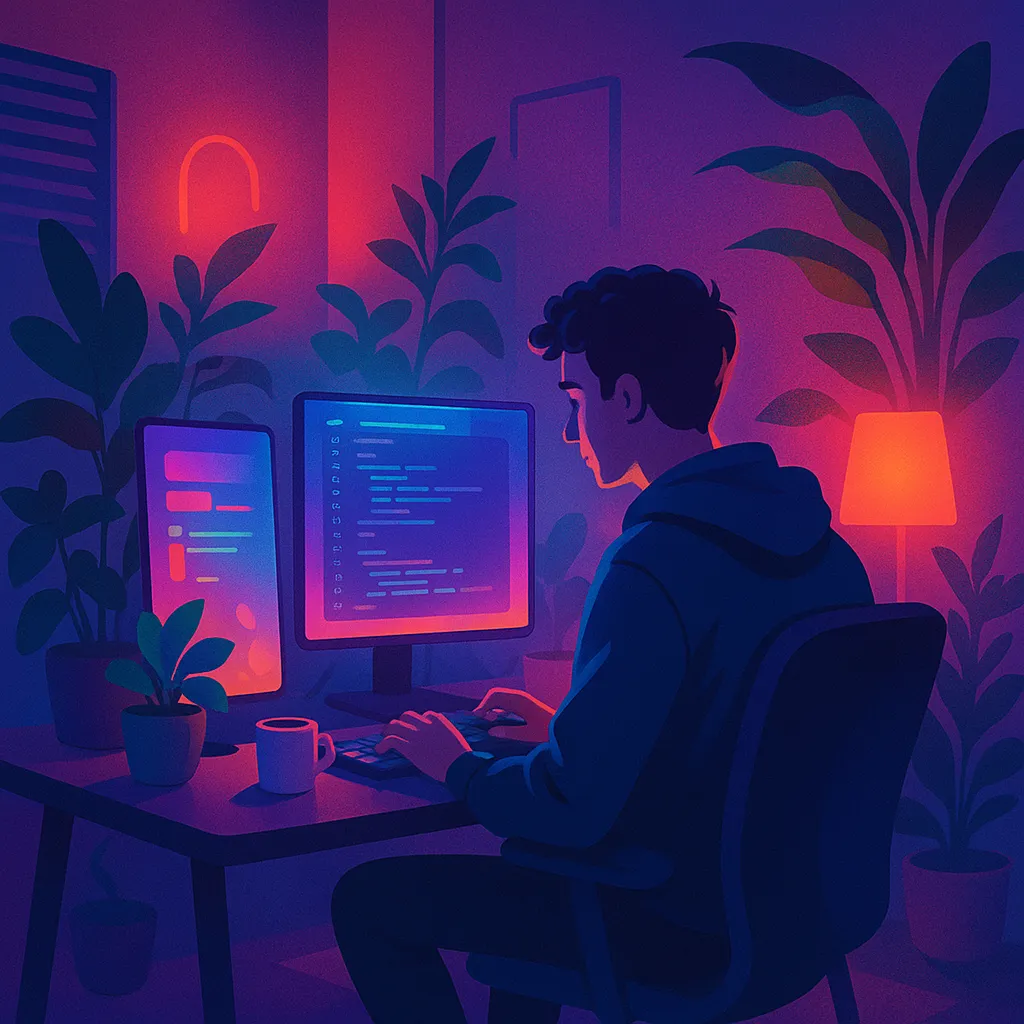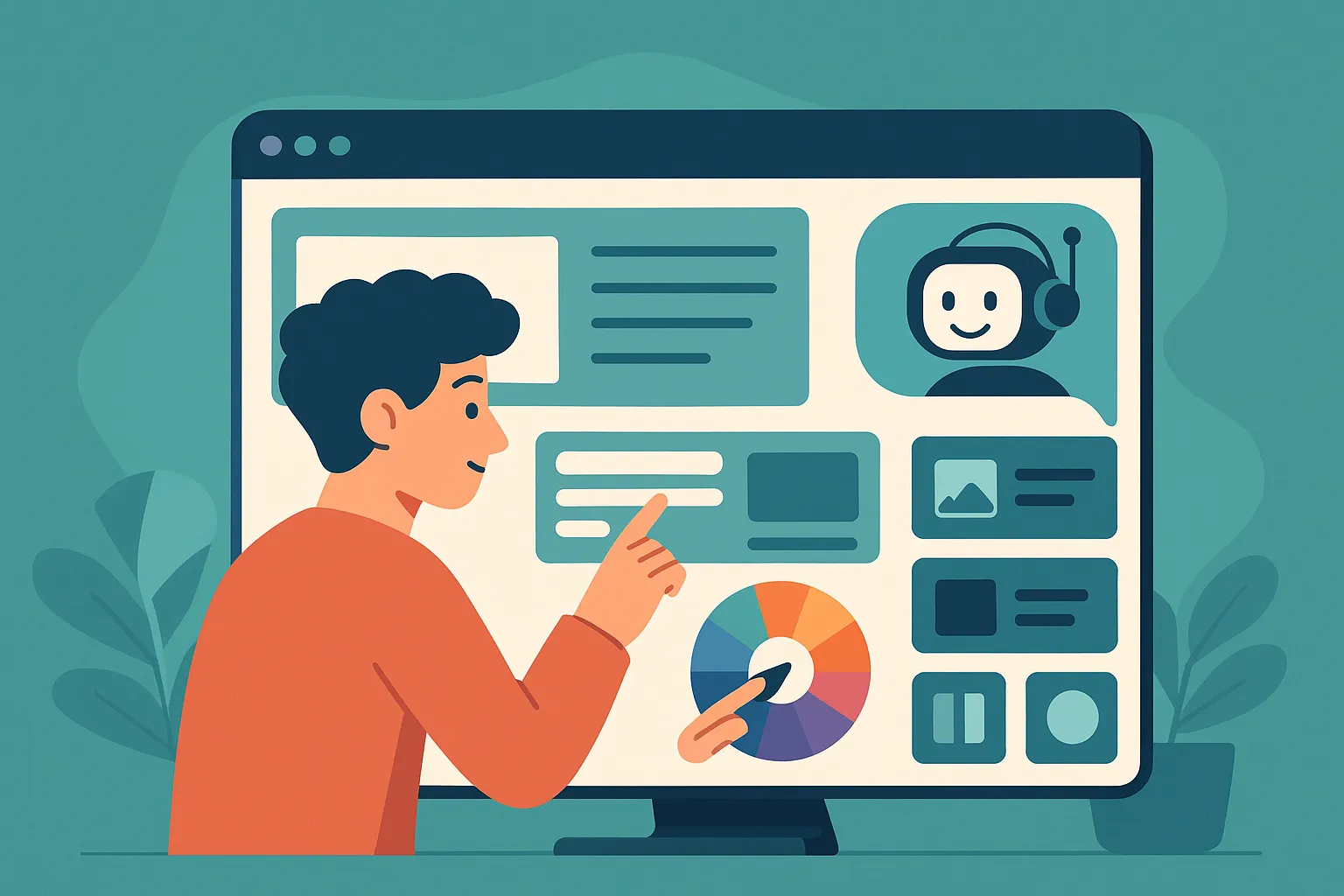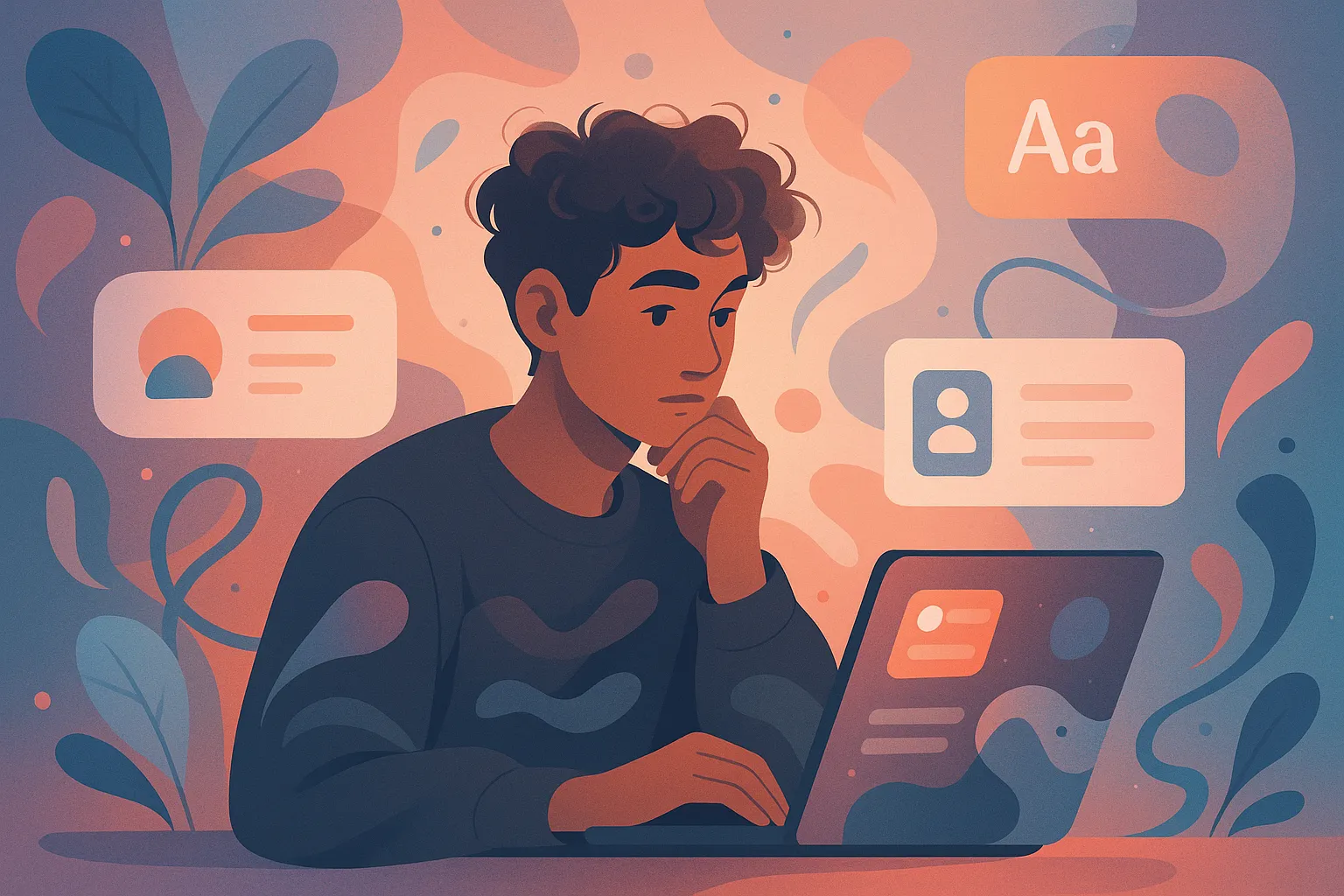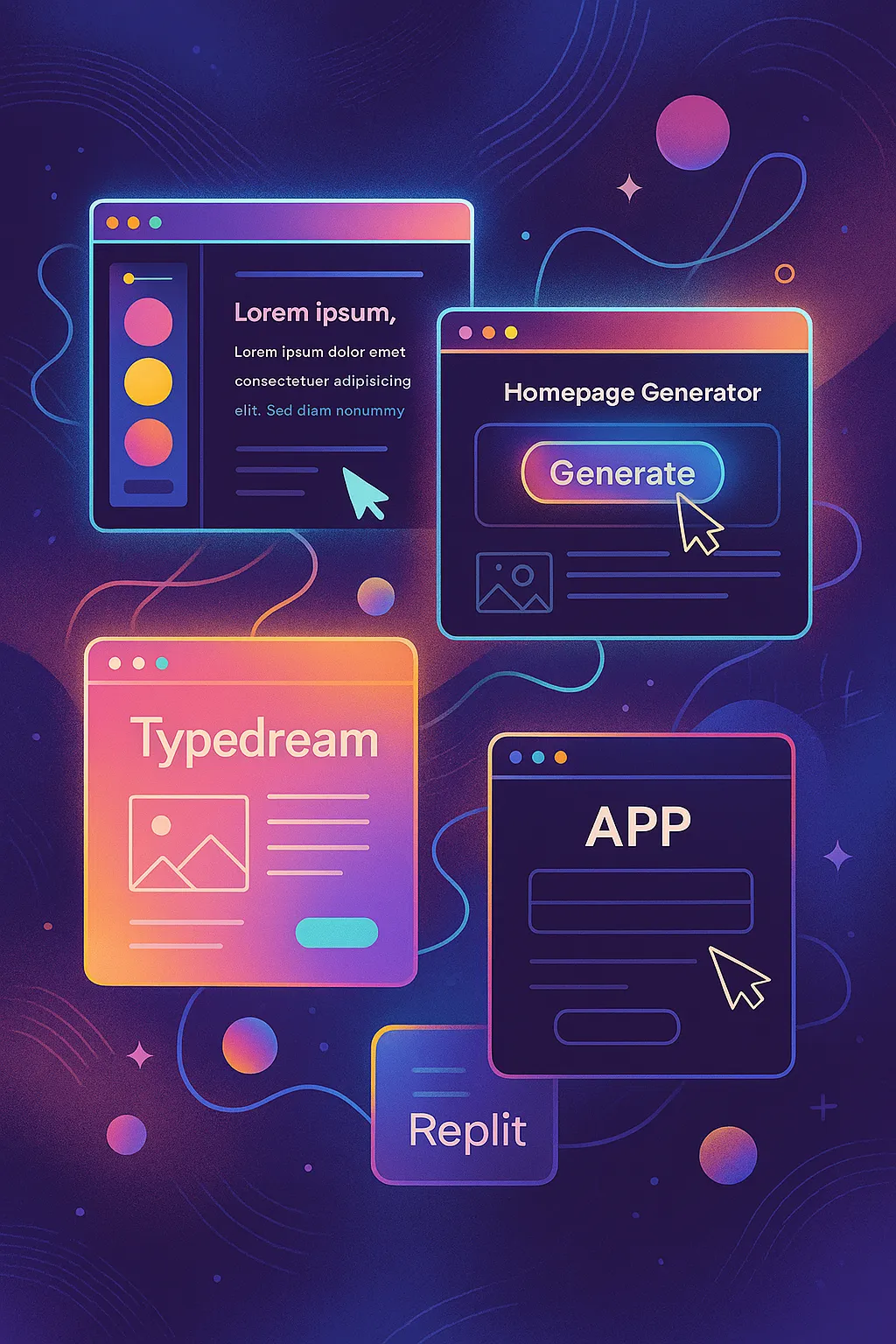What Is Vibe Coding? A New Way to Build with AI, Aesthetics, and Intuition

Introduction: What Is Vibe Coding?
Forget rigid frameworks, dry documentation, and hours of debugging for a moment — because there’s a new style of development taking over the internet: vibe coding. If that phrase makes you smile, you already get it.
Vibe Coding is about building websites, apps, or experiences based on intuition, mood, and aesthetics rather than strict logic or structured planning. It’s coding by feel — where color palettes, animations, and "it just feels right" take priority over dry technical specs.
This isn't just a meme or a Gen Z movement. Thanks to AI tools, no-code platforms, and increasingly natural interfaces, vibe coding is becoming a viable approach to real-world creation. And while traditionalists might scoff, the results speak for themselves: beautiful, expressive, often viral projects that look and feel good without a single line of hand-written backend code.
1. Origins of the Vibe Coding Trend
The term "vibe coding" may have started as internet slang, but it taps into a broader cultural movement: the fusion of design, intuition, and automation. It’s a reaction to decades of developer culture that prioritized structure, optimization, and control above all else. In contrast, vibe coding celebrates experimentation, fast iteration, and creative freedom.
The trend first gained traction among indie creators, TikTok designers, and digital minimalists who wanted personal sites and portfolios that felt unique — not like templated clones. These creators weren’t always traditional coders. They often came from design backgrounds, worked in Figma, or just had a clear sense of visual identity. What they lacked in technical know-how, they made up for in taste and curiosity.
The arrival of tools like Framer, Webflow, and Durable allowed these users to bring moodboards to life. Instead of building wireframes and then slowly coding each page, they started with the vibe — the aesthetic direction — and used AI or visual tools to fill in the structure.
Think dark mode gradients with floating emojis, or personal sites that look more like animated zines than developer portfolios. These projects weren’t necessarily optimized, scalable, or accessible — but they vibed. And people loved them.
2. How AI Tools Are Making Vibe Coding Possible
What really turned vibe coding from a niche behavior into a full-on movement was the explosion of AI-assisted development tools. Suddenly, you didn’t need to know how to code to build something cool — you just needed a good prompt.
Let’s look at some of the tools that vibe coders use daily:
Framer
Framer is arguably the vibe coding tool of the moment. It lets you design a site visually — but with powerful animations, interactions, and AI-assisted layout generation baked in. You can start with a vague idea (“a cozy portfolio with a vaporwave color palette”) and let Framer’s AI help generate sections, navbars, typography, and responsive layouts. It’s design-first, but production-ready.
Vercel’s v0.dev
This experimental tool lets you type a prompt like: “A bold landing page for a crypto startup with neon accents and scroll animations.” And within seconds, it gives you a complete React app. You can then tweak it in code or regenerate parts with more specific prompts. It’s raw, but incredibly powerful — and it enables vibe coding directly from your imagination.
Magician (Figma Plugin)
For designers who live in Figma, Magician uses AI to auto-generate copy, UI elements, and even interactive behavior based on your frames. It bridges the gap between static design and coded prototype — perfect for building by instinct.
Durable
Durable markets itself as “the AI website builder” — and it lives up to the name. In 30 seconds, you can create a working site for your brand or business just by answering a few questions. You get a homepage, a hero image, a contact form — and yes, a vibe. It’s not for developers, it’s for creators.
Code Interpreter (ChatGPT)
Want to sketch out a data-driven idea or visual without building a full dashboard? ChatGPT’s Code Interpreter mode lets you upload files, generate plots, write scripts, and even simulate front-end logic — all through conversation. This isn’t classic coding. It’s exploration through dialogue.

These tools — and dozens more — have shifted the developer’s workflow from step-by-step logic to iterative play. Instead of writing HTML/CSS from scratch, vibe coders ask: “What if the site felt like a rainy night in Tokyo?” Then they prompt, prototype, adjust, and remix — all without worrying about linting errors or semantic tags.
The results? Pages that feel alive. Interfaces that reflect personality. Tools that invite spontaneity.
And no, it’s not lazy — it’s expressive. It’s like jazz for the browser.
3. When Vibe Coding Works — and When It Doesn’t
Now let’s be honest: vibe coding isn’t for everything. Like any creative process, it has its limits.
✅ Where It Shines:
- Portfolios and personal sites
- Landing pages
- Mood-driven prototypes
- Artistic and experimental projects
❌ Where It Falls Short:
- Complex web apps
- Accessibility compliance
- Scalability
- Data-heavy dashboards or structured input
That said, many developers are starting to combine both approaches: vibe coding for the front-end shell, traditional logic underneath. Tools like Wized, Xano, or even Supabase can help bridge the two.
Vibe coding isn’t meant to replace dev best practices. It’s meant to expand who gets to build — and how.
4. Vibe Coding as a Mindset: Trusting Intuition Over Structure

More than a toolset, vibe coding is a mindset. It’s about trusting your creative instincts. Starting before you have it all figured out. Letting color, motion, layout, and tone guide your decisions instead of sticking to a framework or spec sheet.
This mindset is especially powerful for people who:
- Don’t come from a traditional coding background
- Work in design, content, or art
- Get stuck in the planning phase
- Want to make something now without overthinking
It aligns well with how modern AI tools function: they reward play, iteration, and curiosity over rigid structure.
Where an engineer might say “I’ll build that component once I define the logic,” a vibe coder says “I’ll sketch it now and tweak the rest as I go.” It’s rapid, fluid, and often surprisingly effective — especially for web experiences that are emotional or stylistic in nature.
This isn’t just a shortcut. It’s an invitation: to make weird things, beautiful things, or deeply you things — without needing a CS degree or a code bootcamp.
5. Tools That Embrace the Vibe

The vibe coding movement wouldn’t be possible without a growing ecosystem of tools that lean into aesthetics, playfulness, and low-friction creativity. These platforms aren’t just functional — they feel good to use. They’re fast, expressive, and optimized for makers who think in color palettes and typefaces rather than data models and functions.
Let’s spotlight some of the most vibe-aligned tools on the market today:
Framer
Framer is the gold standard for vibe coding in 2025. It combines the visual freedom of Figma with the power of React under the hood. Designers can drag and drop their layouts, while developers can fine-tune animations or logic using custom code. Its AI assistant can generate full layouts from simple prompts like “a moody portfolio with serif fonts and scrolling transitions.” Plus, everything it produces is production-ready and lightning fast.
Durable
Perfect for freelancers, small businesses, or creators who want to launch a site yesterday. You answer a few questions, and the AI builds you a homepage, contact form, service list, and more — all in under a minute. What makes it vibe-friendly? The generated sites feel modern, visual, and clean by default. Great typography, sensible color use, and spacing that doesn’t scream “template.”
TeleportHQ
TeleportHQ helps you go from Figma or prompts directly into clean, componentized front-end code. It’s great for people who want to “vibe it out” visually, then hand over something clean to a developer — or even continue from there themselves.
Softr & Typedream
Both of these no-code site builders offer beautiful defaults that are easy to personalize. Think Notion-style simplicity but with actual design taste. Softr is more app-focused (great for client dashboards or listings), while Typedream is ideal for minimalist personal sites or links pages. You don’t start with a blank canvas — you start with a vibe.
Replit Ghostwriter
For coders who still want to stay in the zone, Ghostwriter offers inline AI suggestions, refactors, and completions. It's not no-code — but it's vibe-enhancing. You type something vague, and Ghostwriter sharpens it. It's ideal for developers who want to move fast and stay creative without breaking flow.
All of these tools lower the barrier between idea and implementation. That’s the magic of vibe coding: it minimizes friction. You don’t need 20 browser tabs open to launch a project. You just… go.
And in that creative immediacy, something beautiful happens.
6. The Future of Vibe Coding
Vibe coding may have started as a meme, but it’s quickly becoming a movement — and quite possibly a new frontier in software development.
We’re moving from an era of code as control to code as collaboration. From apps built line-by-line in silence to sites sketched aloud with AI. From “Does this validate against the schema?” to “Does this make you feel something?”
As AI tools get better at understanding intent, style, and emotional tone, the need for strict technical translation will fade. You won’t need to know HTML to make a beautiful homepage. You won’t need to study JavaScript to create a portfolio with animation. Instead, you’ll describe what you want — and refine it in real time.
This doesn’t mean traditional developers are going away. In fact, the best vibe coders often are developers — but they’re just choosing a new workflow. One that prioritizes clarity, aesthetics, and accessibility of expression. One that puts the joy back into making things.
Vibe coding also opens doors for entire groups of people who’ve felt shut out of tech:
- Artists who don’t want to spend six months learning React
- Small business owners who want a unique site without a dev team
- Students, creators, or hobbyists who want to build something fun on a weekend
It’s democratizing, it’s intuitive — and it’s only going to grow.
7. Conclusion: It’s Not Just a Vibe — It’s a Vision
Vibe coding isn’t about abandoning logic — it’s about centering feeling.
It’s about starting with how something should look, sound, or flow, and using AI and modern tools to build toward that goal. It's about trusting your instincts, collaborating with machines, and creating interfaces that are uniquely yours.
In a world where generative tools are everywhere and creative constraints are falling away, the best products might not be the most optimized — they might just be the most vibey.
So next time you’re staring at a blank page or an empty IDE, don’t ask: “What should I build?”
Ask: “What does it feel like?”
Then start building from there.
Because when the tools fade into the background and the experience takes over — that’s not just coding. That’s vibe coding.